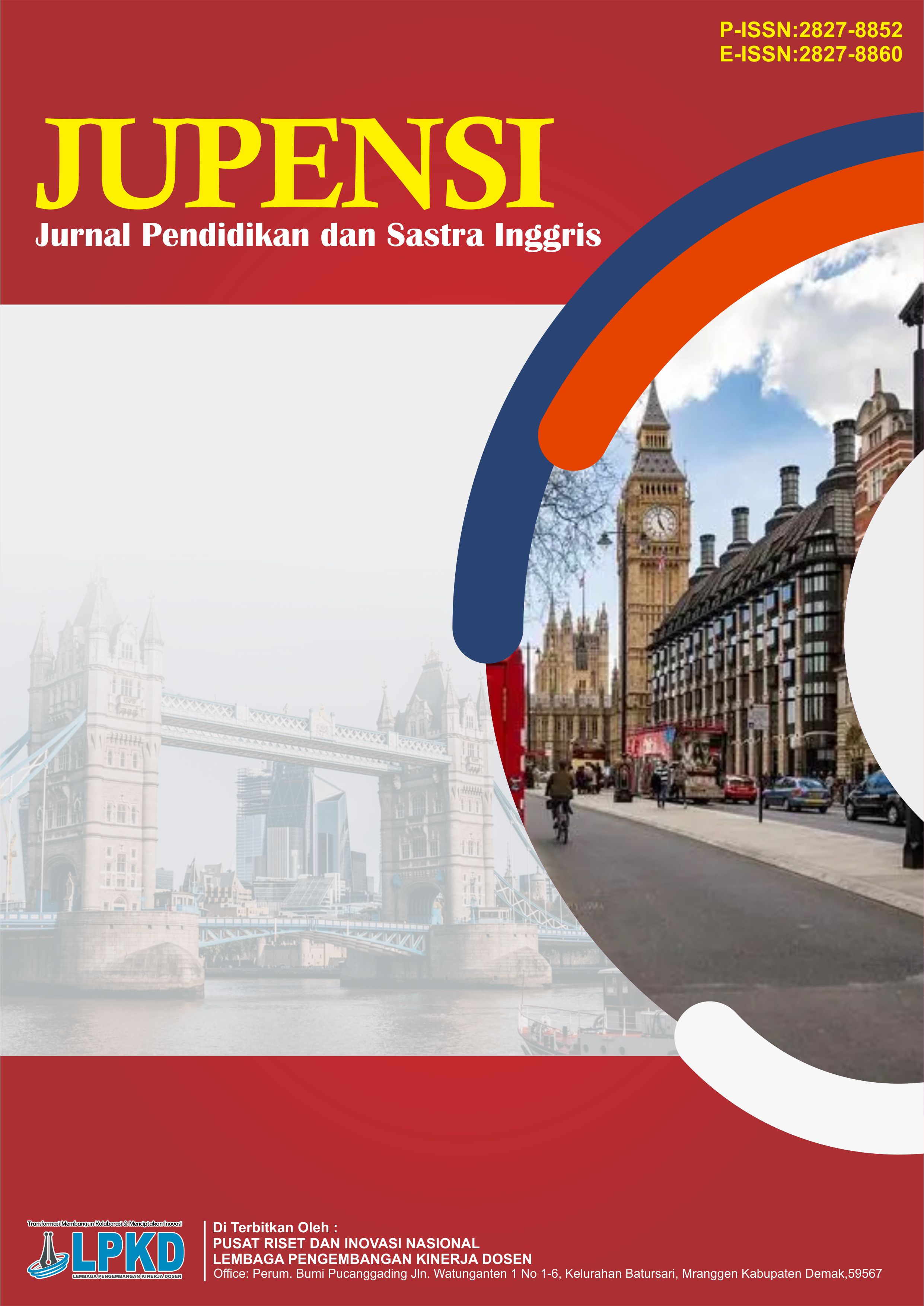The Correlation Between Informal Peer Communication in English and Students’ Self-Confidence in Speaking English in Class at MAS Pondok Pesantren Syafa'aturrasul
DOI:
https://doi.org/10.55606/jupensi.v5i3.6069Keywords:
Correlation, Informal Peer Communication, Self-Confidence, Speaking English, Student InteractionAbstract
This study aims to determine the relationship between informal peer communication in English and students’ self-confidence in speaking English in class among twelfth-grade students of MAS Pondok Pesantren Syafa’aturrasul. The research employed a quantitative approach with a correlational design. The sample consisted of all 64 twelfth-grade students selected using a total sampling technique. Data were collected through questionnaires on informal peer communication and self-confidence in speaking English. Data analysis was carried out using SPSS 26 with normality, linearity, and Pearson Product-Moment correlation tests. The results showed a strong and significant positive relationship between informal peer communication in English and students’ self-confidence in speaking English in class (r = 0.690; p < 0.05). This indicates that the more frequently students engage in informal communication in English with their peers, the higher their self-confidence in speaking English in class. The study highlights the importance of peer interaction in enhancing students’ confidence and encourages teachers to create a supportive environment that fosters English communication practice among students.Downloads
References
Ghafar, Z. (2023). The influence of self-confidence on English language learning: A systematic review. International Journal of Applied Educational Research (IJAER), 1(1), 55–68. https://doi.org/10.59890/ijaer.v1i1.452
Gladys Uzezi, J., & Gamnjoh Dennis Deya, D. (2017). Relationship between peer group influence and students' academic achievement in chemistry at secondary school level. American Journal of Educational Research, 5(4), 350–356. https://doi.org/10.12691/education-5-4-2
Huriyah, L., Nuriawarti, F. A., Zahro, S. F., & Hardini, W. A. (2020). Peer dialogue as an effective way for teaching speaking: Indonesian EFL students' voices. Advances in Social Science, Education and Humanities Research, 434, 235–237. https://doi.org/10.2991/assehr.k.200427.046
Kamilia, A. P., Arfah, H., & Usuluddin. (2024). The relationship between students' self-confidence and their motivation to speak English (An investigation at 11th grade students at MA Banat Thohir Yasin). Jurnal Ilmiah Profesi Pendidikan, 9(4), 2765–2770. https://doi.org/10.29303/jipp.v9i4.2650
Li, H. (2025). Impact of collaborative learning on student engagement in college English programs: Mediating effect of peer support and moderating role of group size. Frontiers in Psychology, 16(April), 1–11. https://doi.org/10.3389/fpsyg.2025.1525192
Melnyk, O. V. (2024). Modern English in a globalized world. Studia Philologica, 23, 132–141. https://doi.org/10.28925/2412-2491.2024.2310
Messaoud, H. E. B. (2022). A review on self-confidence and how to improve it. Global Journal of Human Resource Management, 10(5), 26–32. https://doi.org/10.37745/gjhrm.2013/vol10n52632
Nhan, L. K. (2024). Exploring students' perceptions of peer interaction in developing English speaking skills. International Journal of Innovative Science and Research Technology, 9(9).
Ningsih, D. S. (2020). The influence of teachers' reinforcement on students' self-confidence in speaking performance at Senior High School 12 Pekanbaru [Undergraduate thesis, Universitas Riau].
Ogba, T. I., Awa, J. O., Ngwoke, R. I., & Ajemba, O. A. (2020). Language learning and language acquisition: A study of formal and informal communication situations in the English language. Journal of Humanities and Social Science (IOSR-JHSS), 25(7), 27–33. https://doi.org/10.9790/0837-2507122733
Pham, A. T., Hong, H. T., Chau, T. T., Le, N. V. A., Tran, P. T. T., & Nguyen, M. N. N. (2021). The relationships between students' self-confidence and their English-speaking performance: A case study of English-majored students at a private university in Vietnam. European Journal of Education Studies, 8(9), 18–35. https://doi.org/10.46827/ejes.v8i9.3872
Pujiani, T., Nisa, K., & Krisbiantoro, B. (2021). Improving the students' self-confidence in speaking English through YouTube. International Journal of Health Science and Technology, 2(3), 157–166. https://doi.org/10.31101/ijhst.v2i3.2173
Samosir, H. (2022). Exploring the impact of limited English exposure on language proficiency among junior high school students in rural areas. TEKILA: Journal of Language Teaching and Literature, 1(2), 60–69.
Schmerse, D. (2021). Peer effects on early language development in dual language learners. Child Development, 00(0), 1–17. https://doi.org/10.1111/cdev.13588
Susilowati, E., & Kusumaningtyas, E. D. (2025). Unpacking communication strategies in casual conversation: An exploration of Indonesian EFL learners. English Education and Literature Journal (E-Jou), 5(1), 129–147. https://doi.org/10.53863/e-jou.v5i01.1515
Zhang, Y., Liang, Y., & Wang, Y. (2024). Impact of peer interaction on the improvement of English speaking for students of non‐English majors. International Journal of Education and Social Development, 1(1), 19–22. https://doi.org/10.54097/ax5p6t53
Downloads
Published
How to Cite
Issue
Section
License
Copyright (c) 2025 Jurnal Pendidikan dan Sastra Inggris

This work is licensed under a Creative Commons Attribution-ShareAlike 4.0 International License.









